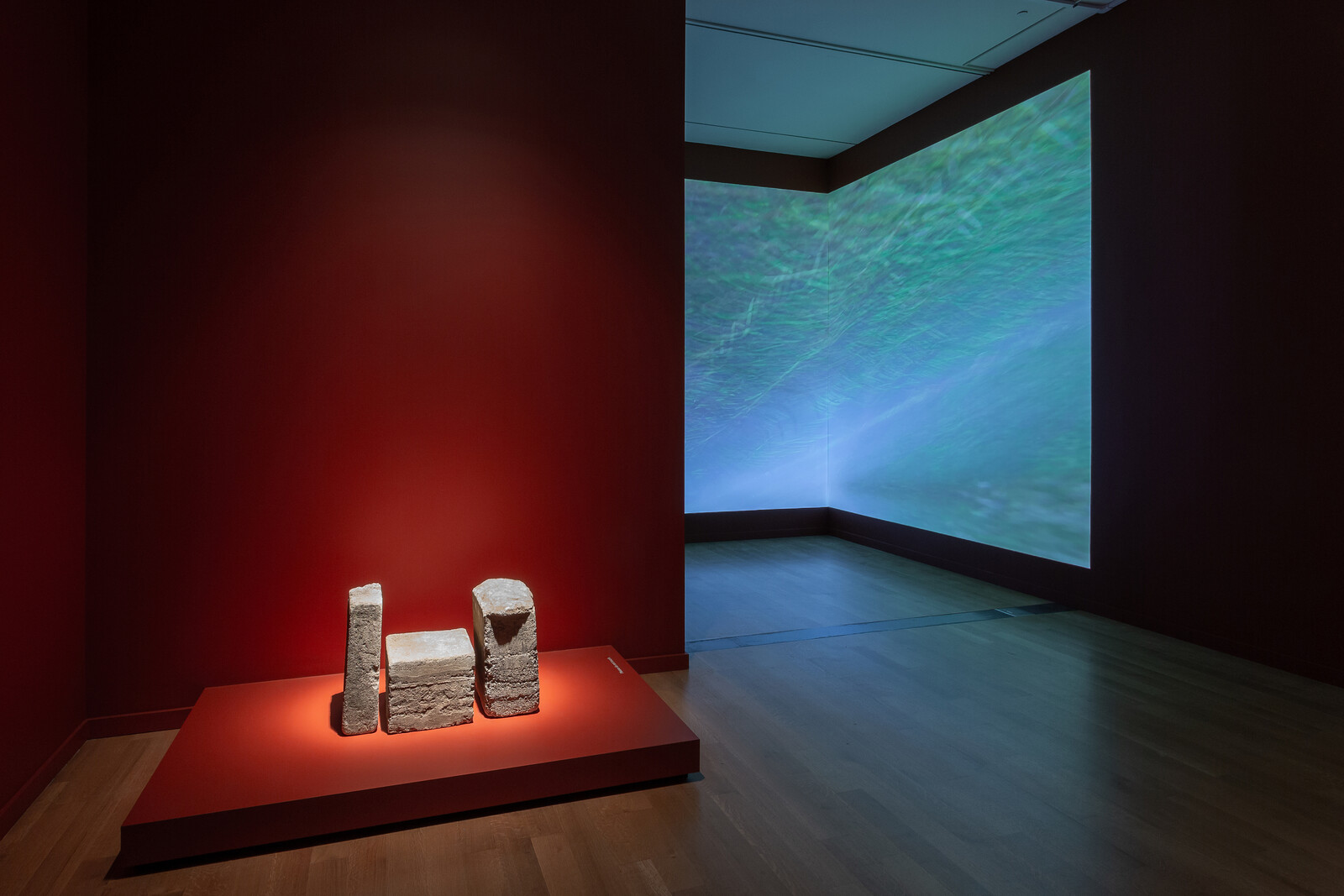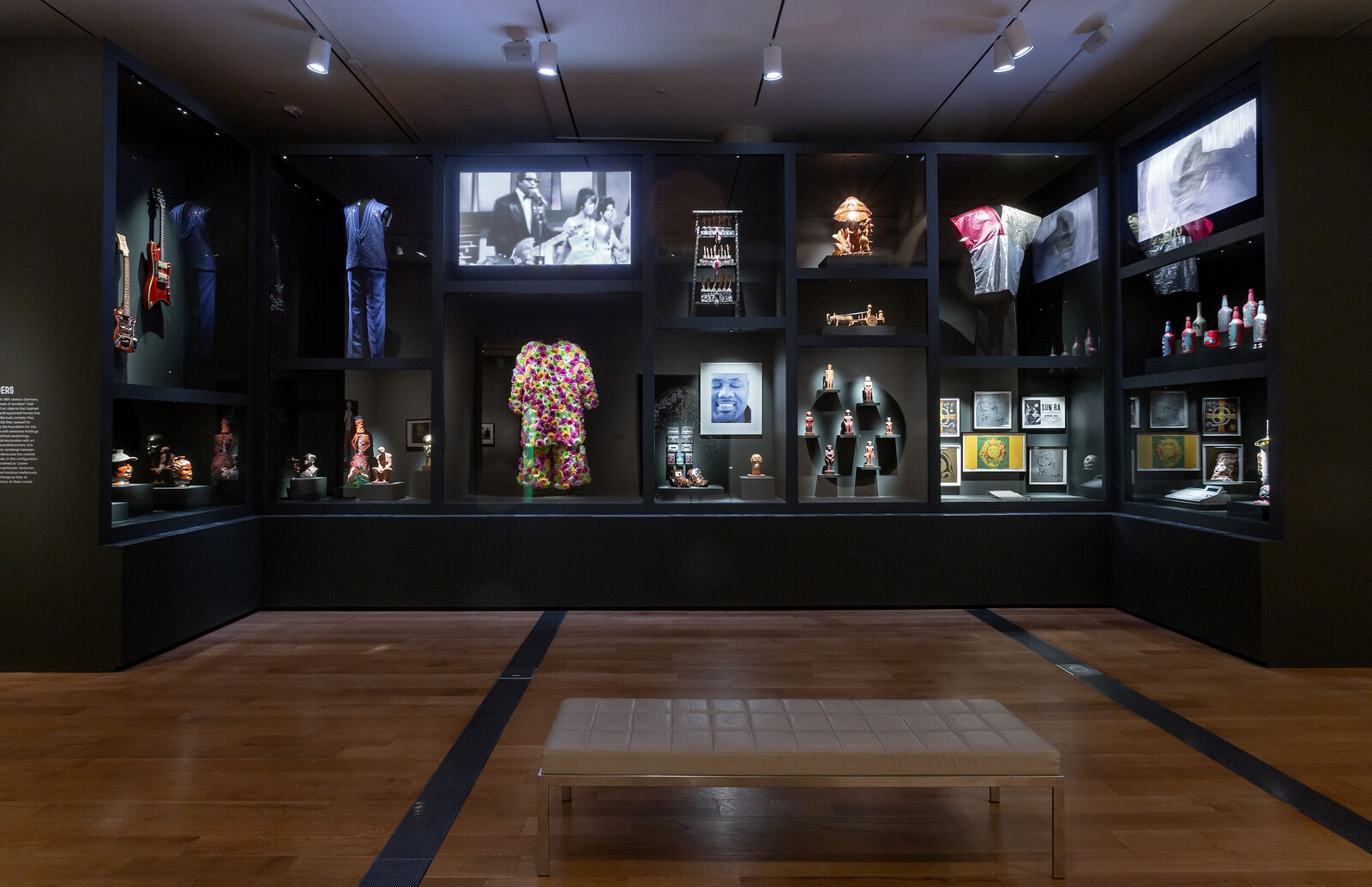“The South got something to say!” declared André 3000 at the 1995 Source Awards, after Outkast were awarded Best New Artist to boos from the audience. Goodie Mob, another Atlanta-based hip-hop group, released a track called “Dirty South” that same year. Both these events are cited by curator Valerie Cassel Oliver, who also notes in her catalogue essay for “The Dirty South” that the term had been in use since at least the 1980s. So what does it mean? We know that the American South is below the Mason–Dixon line, but what’s dirty about the prevalent image of it? Is it the paradox of living with violence and corruption while also celebrating its finer qualities, as Goodie Mob suggests? The Northern fantasy of rural life and unpaved roads that resist Cartesian order? An intermingling of African, European, and Indigenous traditions?
This is not the first exhibition to focus on the American South in recent years. In 2016, “Southern Accent” opened at the Nasher Museum: a thirty-year survey show that treated the region as an “emotional idea,” a term borrowed from William Faulkner. What’s new about the VMFA exhibition is its focus on the particularities of Black culture in the region, particularly the ways in which musical and visual histories are entangled. “The Dirty South” proposes a look back after the Great Migration—during which over six million African Americans left the South for the North—at a time when figures such as journalist Charles M. Blow have argued for a reverse Great Migration. In doing so, it embraces the South’s vibrant mixture of cultures perhaps best characterized by the grinding slowness of its swampy summers, as evoked by the slowed-down, “chopped and screwed” hip-hop pioneered by Houston’s DJ Screw.
The show opens with a modified 1990 Cadillac called a SLAB (short for Slow, Low, and Banging) owned by rapper Fiend aka International Jones, which highlights the link between music and material culture. Summer Breeze (2018) by Paul Stephen Benjamin emphasizes the theme. This pyramidal arrangement of TV monitors showing Billie Holiday and Jill Scott singing “Strange Fruit” sets a haunting tone. Nearby, Beverly Buchanan’s abstract sculpture Untitled (Frustula Series) (c. 1978), a trio of concrete blocks placed on a low plinth, nods to Southern vernacular architecture. Projected onto a nearby wall is Allison Janae Hamilton’s 2019 video Wacissa, which dips the camera just below the surface of water. It’s a disorienting experience that places the viewer in a dense tangle of reeds.
In the following room, Nick Cave’s Soundsuit (2010)—a tall, fetish-like character made of dark brown twigs and crimson synthetic berries—stands in front of Michi Meko’s painting The Seasons – Summer (2019), a dark canvas dappled with a glowing network of golden lights, like stars in the night sky. Kevin Sipp’s Take it to the Bridge/Trance-Atlantic (2009), a drum connected by a piece of driftwood to a turntable, is displayed on a low plinth nearby: it links both different media and African and American rhythms. The room exemplifies the Afro-diasporic traditions that have characterized Southern culture since the Middle Passage.
STAGED, Slugs’ Saloon (2018), an installation by Jason Moran, depicts a hallowed space in the history of jazz: the eponymous East Village saloon here recreated with a jukebox, cello, drum kit, and other props displayed against a painted backdrop. Placed in relation to Revival Meeting, a 1994 painting by Benny Andrews depicting a rocking revival hall, it points to the intersection of music and spirituality. Around the corner is Coronation Theme: Organon (2008), a monumental sound work by Nadine Robinson made up of a tower of speakers, shaped like Atlanta’s Ebenezer Baptist church, and a mashup of Handel’s “Coronation Anthems” with sounds of fire hoses and attack dogs from a 1963 civil rights demonstration in Birmingham, Alabama. Directly opposite is Joe Overstreet’s Saint Expedite I (1971), an abstract sculpture that includes colored shapes of green and black canvas anchored to the floor and ceiling by ropes tied off with noose knots. An adjacent room of abstract works includes Sanford Biggers’s Khemestry (2017), a fractal-like wall piece combining antique quilts and gold leaf on plywood, and Sam Gilliam’s 1980 painting Purpled (Chasers) inspired by the flying geese quilt motif—both pieces reference the history of hidden messages in quilts used along the underground railroad.
“The Dirty South” features a number of vernacular artists, such as Sister Gertrude Morgan whose gospel songs are played alongside her colorful drawings. This element of performativity is linked to New Orleans procession culture with King of Arms, a 2015 video performance by Rashaad Newsome that combines Mardi Gras Indians, queer ballroom dancing, and a marching band. This stunningly effective mashup exemplifies another quality of the South: the elaborate, synthetic set of rituals that joyfully embrace the carnivalesque as an antidote to repressive forms of power. In the following room is a wunderkammer-like series of display cabinets that include ephemera from Sun Ra, James Brown, and CeeLo Green along with stoneware pots, a diamond-encrusted grill, and mixtapes by DJ Screw.
Arthur Jafa’s Love Is The Message, The Message Is Death (2016) closes the exhibition. Despite the familiarity of this widely shown work, it has a new resonance here. Sited in the former capital of the Confederacy, “The Dirty South” is both a defiant rebuke to a harrowing history and an embrace of a rich and complex tradition. It speaks to an audience that recognizes many of the ideas and experiences presented; a process that allows some the pleasure of being seen. But while the show is traveling, it is not, as yet, being presented in the North to audiences more likely to benefit from its challenge to the oft-stereotyped view of the region. What does the South have to say? According to Cassel Oliver, it’s not only what is said but how. It’s in the collage-like mixing, like that of DJ Screw; it’s in its cabinets of wonder; it’s in its Afro-diasporic traces; and in the abstract cadence of the Southern vernacular that has had a profound influence on what it means to be American.










